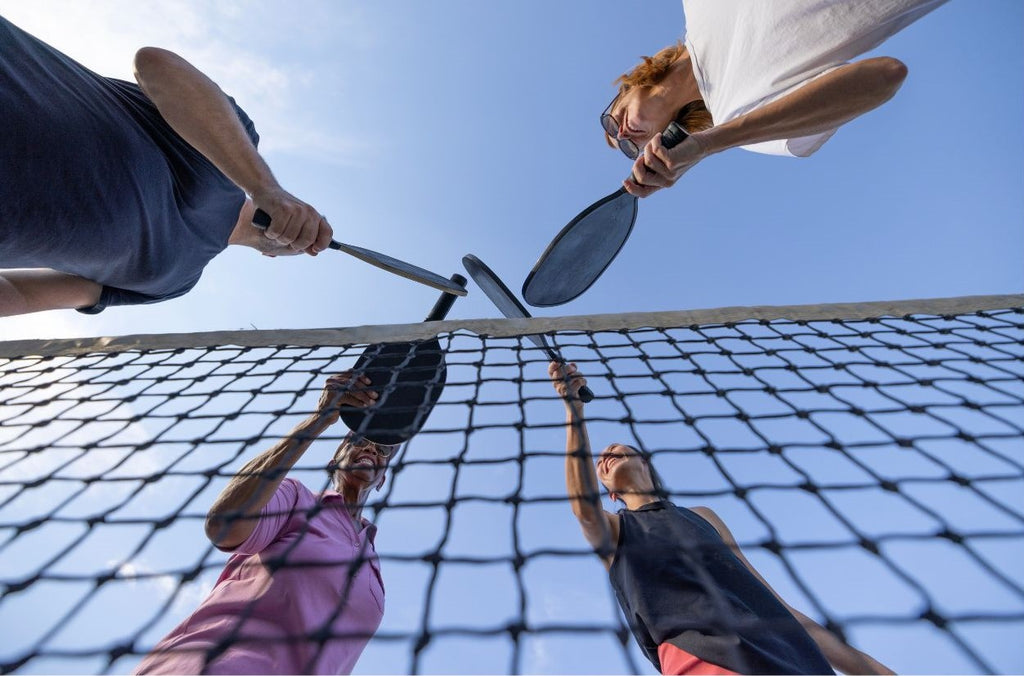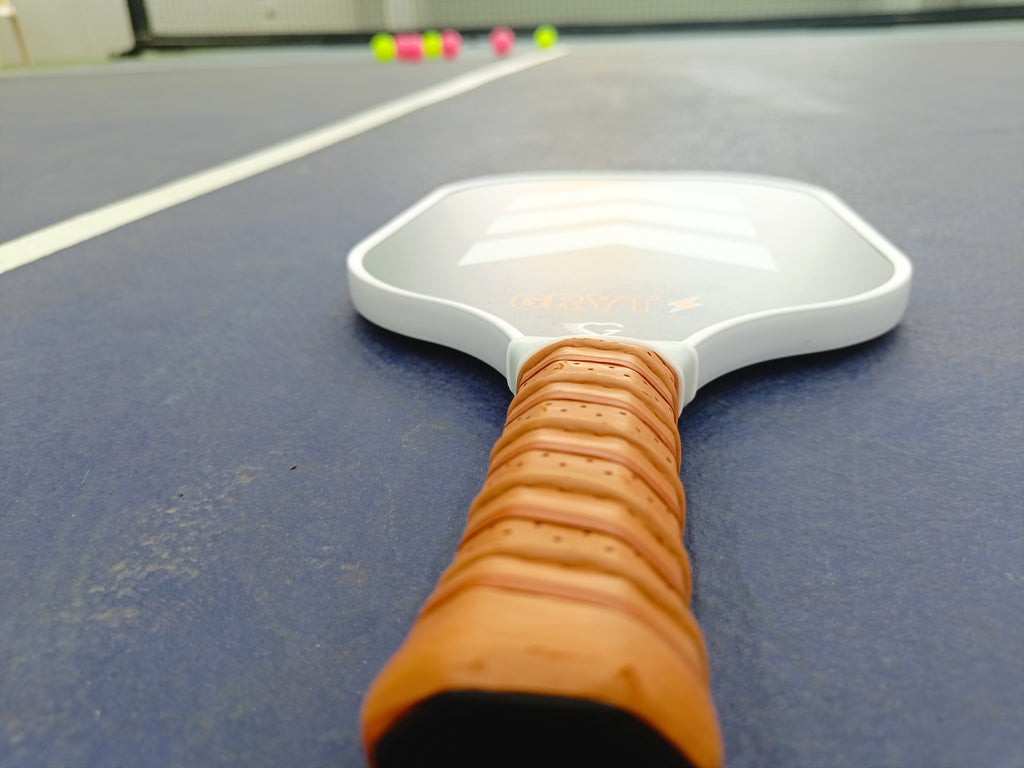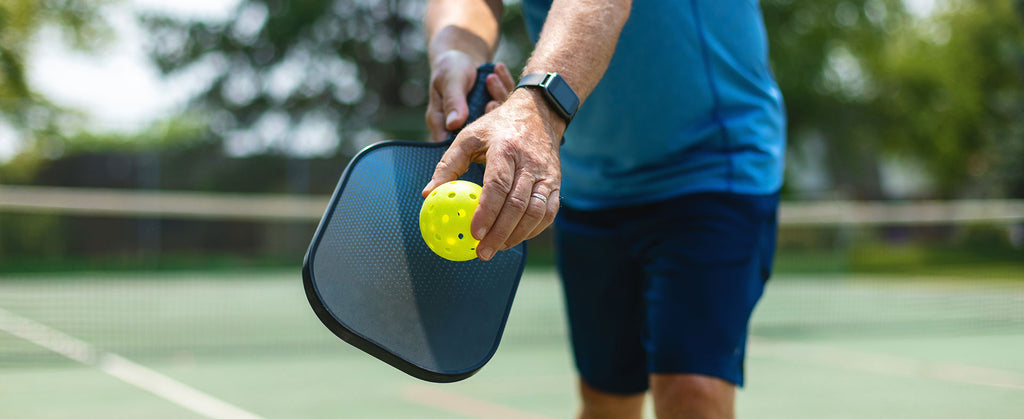
Pickleball 101: A beginner’s guide.

A sport that's as fun to play as it is to say, Pickleball is a mashup of tennis, badminton, and table tennis, played on a smaller court with a paddle and a plastic ball with holes. It's a social sport that's easy for beginners to pick up, yet still provides a good challenge for more experienced players.
Pickleball is played on a court resembling a badminton court, with a net lower than that of tennis. The game allows for both singles and doubles play. A round begins with an underhand serve, and after the serve, the ball must bounce once on each side before players can volley it in the air.
The court set up~
Court dimensions:
The dimensions of a typical pickleball court, spanning 20 feet in width and 44 feet in length, represent a scale roughly one-fourth that of a tennis court. This reduced size significantly enhances the game's dynamic and high-paced character.
Non-Volley Zone:
A unique element in pickleball is the "kitchen," a charming term for the non-volley zone. Picture a 7-foot space on both sides of the net, reaching backward. It's like a no-fly zone for volleys—players can't smack the ball mid-air while dancing in this kitchen space!
Purpose of the Non-Volley Zone:
The kitchen adds a strategic element to the game by preventing players from executing smashes or volleys too close to the net. This rule encourages players to engage in well-placed shots and rallies, promoting skillful play over brute force.
Boundary lines:
The court is outlined by key lines—sidelines 20 feet apart and baselines 44 feet apart. These lines are players' guides, helping them decide if the ball is in or out of bounds.
Baseline and Non-Volley Zone:
Emphasise the connection between the baseline and the non-volley zone. Players can hit volleys from behind the non-volley zone, but they must be careful not to step into the kitchen during the shot. This creates a strategic challenge, especially during close net exchanges.
The Role of the Kitchen in Strategy:
Players strategically position themselves around the kitchen, aiming to control the game by limiting their opponents' options near the net. The kitchen introduces an element of finesse, requiring players to master the art of well-placed shots.
Equipment:
Pickleball essentials include paddles in wood, composite, and graphite for different skill levels, alongside unique pickleballs for indoor and outdoor play. Proper court footwear, personalised grip size, and weight preferences contribute to players' choices. Durable edge guards protect paddles, and gear selection is guided by skill level, with demo days and reviews offering valuable insights for informed choices.
Pickleball Dynamics:
In pickleball, scoring to 11 points with a two-point margin is crucial, using a rally format where both teams can score. Side-outs occur on faults or if the serving team fails to score, leading to the opposing team's serve. Serving is underhand and diagonal, with faults like foot faults and double bounces. The serving team continues until a fault, either resulting in a side-out or a point for the opponent. Strategic serving advantages include the right-hand court during even scores and the left-hand court during odd scores.
Resources for Beginners:
For pickleball beginners, start with online tutorials and join local clubs for a supportive community and regular sessions. Seek beginner-friendly courts and attend workshops or mentorship programs for hands-on guidance. Explore local events, tournaments, and literature for inspiration and a deeper understanding of the game. This mix ensures an enjoyable and well-rounded introduction to pickleball.

